 Chris Hector reports…
Chris Hector reports…
Chantal Wigan sort of crept up on the Australian dressage scene. While you can see most riders maturing as they work their way through State Champs and National Championships, Chantal did her hard yards in Europe, emerging from seemingly nowhere in the run up to the Beijing Games with a Grand Prix horse, and some impressive performances.
They missed Hong Kong, and then made another serious bid for the WEG team in Lexington. Once again it was a near miss, and this time, Chantal decided to bring her Dutch gelding, Ferero, back to Australia to show us what they could do. And wow, did they do that! With a series of wins in our top Grand Prix classes it became harder and harder for our dressage selectors to ignore the Queensland-based rider, eventually they were forced to include her in the Elite Squad.
The truth is that Chantal started out on her equestrian career, like lots of pony-mad kids, as a way of getting around:
“It was a great mode of transport – it was better than walking. We had a property and it was quicker to jump on the pony and head up the back paddock than walk. We moved there when we were about five.”
You did the normal pony club thing…
“We did but Mum hated it. She couldn’t quite bear the over-ambitious parent scene. We weren’t allowed to go that often. If we wanted to go, we either had to hitch a ride, or leave quite early in the morning to get there at eight which was muster. It took about an hour for my sister and I to ride there, that was a lot of fun.”
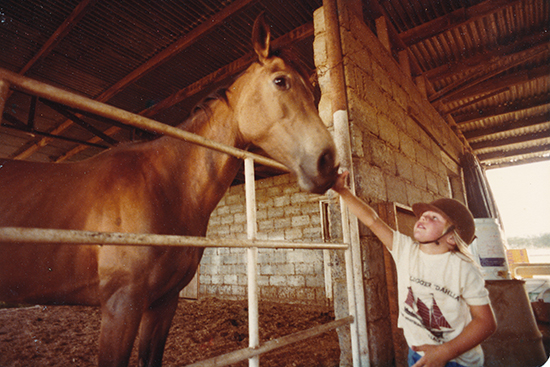 You did a bit of eventing before you became a dressage princess?
You did a bit of eventing before you became a dressage princess?
“Dressage princess, I don’t know about, but yes, I’ve done a bit of everything… eventing, inter-school competitions, which were combined training, showjumping. I was about 12 and I had a broken down B grade showjumper to take me cross country, and he looked after me very well. I got up to restricted novice, but I couldn’t go much further because the horses weren’t suitable. I couldn’t stop them, that was the problem. They all jumped but my Mum said, enough is enough – when you’ve got the stewards there at Figtree Pocket, waving their clipboards frantically at the finish, trying to slow me up. There was no slowing that horse I had. Mum said, that’s too dangerous. So I evented until I was seventeen.”
“After that I did some non-horsey training, decided after three years I didn’t like that, and it was definitely going to be horses. Mum said, if you are going to do horses, you are going to do it properly, and you can’t do it in this country: there’s no industry and no training. That was 1994, she packed my bags and sent me off to England to do my BHS – AI [British Horse Society, Assistant Instructor]. I was in training to do my Intermediate when an opportunity came up to go to Rudolf Zeilinger’s training stable in Germany.”
“I went there for a weekend to see if he would take me on. He did, and I stayed there for two years.”
That was when it was a bit of an Aussie outpost…
“Ricky MacMillan was there with Crisp, we also had a couple of horses, Dom Edin and Dom Perignon both from Australia.”
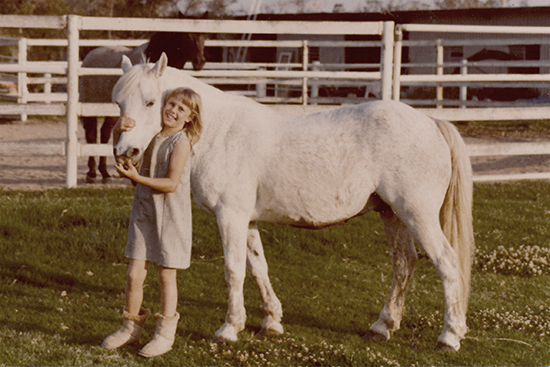 Was that a big shock? Zeilinger as I understand it, is a relatively theoretical trainer, and all you had was the good old BHS?
Was that a big shock? Zeilinger as I understand it, is a relatively theoretical trainer, and all you had was the good old BHS?
“I suppose so, but Zeilinger still had the problem that most of them still have, they don’t have riders that know about horses. I’d grown up with ex-racehorses, horses that weren’t so easy, so my talents were quite useful. I had ridden up to Medium level dressage for my British exams, and I had a horse on lease for 12 months that was a medium dressage horse, so I wasn’t completely new to it.”
“I do still remember my first day at Zeilinger’s, with my milk teeth showing. I had gone there for a trial. I stood for three hours at the gate watching until finally they said, you can go and ride something. I gingerly got ready. As I was getting ready one of the American girls said, whatever you do – it has to be done quickly, don’t take too long. There was a set routine. I guess Zeilinger always looked for people who were smart enough to pick up on what was happening before they had to be told. So if you’d stood there and watched three horses, and you hadn’t seen anyone do rising trot, then best not to come out and do rising trot, long and low. You pick up what you see, and then go and do exactly as you have seen.”
“There was a great big bay Warmblood there that was beautiful, and I was standing at the gate watching, it was doing passage, I said to myself – I want to do that. That horse is beautiful, that reminds me of all the carousel ponies I’ve ever seen. I’m going to learn how to do this.”
“I watched a few more riders, and by day two, I’d ridden a few more horses. Rudolf Zeilinger came up to me and said, you need to get on this horse, and you need to do flying changes. That was great for an eventing rider who had only ever done a single flying change, and even in a medium test, it is a single change. So I just applied the leg and kept counting – my counting was everywhere…”
You still get it wrong occasionally…
“It has stayed with me! Anyway I managed to stumble through. The next day I rode three horses, all different, I’d gone through all the medium movements, done a few changes, then he rode up and said, now you need to passage. Shit! How do I do that? Okay, I’ve seen everyone else, click the tongue, close the leg and apply a half halt. Something happened and it was resembling a passage, we went for a whole long side and then I walked, and he said, why are you walking? I thought the horse was tired. No, you are tired. Now you will do piaffe…”
“He was right beside me on another horse, that was probably where he did most of his thinking, and as an instructor, he was better on a horse beside you than sitting on a chair. He said, now you make a piaffe. So I did what I saw everyone else doing, held the contact a little more, closed the contact, clicked, with the whip a little, and the horse piaffed.”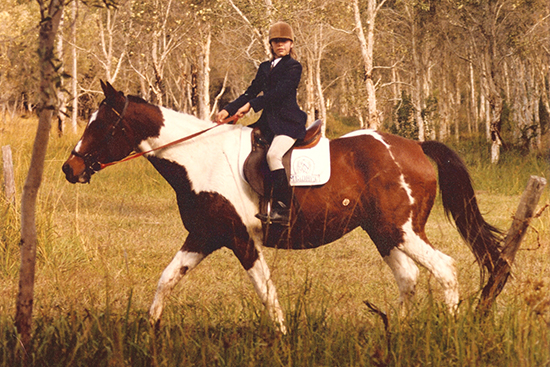
Easy peasey…
“Easy peasey, I thought, well this isn’t so hard. No, I really knew it was really hard. On day three I got chronic food poisoning, German food poisoning is quite easy to get, and I ended up not being able to attend stable duties and just made it to my plane that evening to go back to England.”
“He rang and offered me a job – when can you start? I said, ‘I’m working in England at the moment as a Yard Manager, and I will have to give them a month’s notice as I’ve just started eight weeks ago.’ I gave notice and I spent two years with Rudolf Zeilinger.”
Was that tough?
“Very tough. It was character building. You learn to do your work efficiently, and you have to get accustomed to the level of tough on the horse – that took a lot for me to get used to. Rudolf came from Willi Schultheis and a very old way of training horses. It’s not a method that adapts to any of those things like physiotherapy, or massage or magnetic things – feeding, the feeding style is still what it was when Schultheis was training, which was oats, oats and more oats. That is their diet. They don’t worry about horses getting out of stables, they only come out once a day to be ridden and they leave their horses in the stables all day on Sunday, which used to kill me, and they would not take the horses out.”
“When you start you are riding one, two, three horses, eventually you are riding twelve horses a day, and doing less stable work, which is what I did. It’s an invaluable lesson, you don’t get a feeling by riding one or two horses, you can’t read it, you just have to do it.”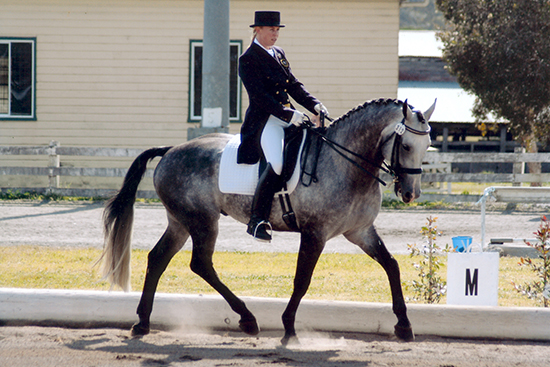
Chantal and Rivergold; the horse she took out to Germany
So then you came back to Australia?
“I did, I’d been kicked by one of the stallions and like any good foreign worker you don’t claim on the owner’s insurance, but before I came back, my mother said, go back to England and finish your exams and get your qualification for teaching. I went back to a riding centre in the UK, and jumped straight into where I left off, to come home with my qualifications.”
“I arrived back in 1997, and started finding horses off the track and training them up to do dressage with them. I did a lot of teaching. We took over the Riding School in 2001 – we later shut that because I couldn’t find quality staff willing to do the seven day week that horses demand. I sold the horses, and in 2006, went back to Europe, back to Rudolf Zeilinger. I had worked very hard with a not-so-talented horse, Rivergold. Beautiful temperament but just lacking the ability to get to international Grand Prix. I took him over to Germany, he was an Australian Warmblood horse by the American stallion, Riverman, a Holsteiner. I took him to Rudolf because that was the system I had been training him with, right from the start. I sold him after I bought Ferero.”
Where did you find Ferero?
“He was in Warendorf, Rudolf helped find him. Against all my better judgement, he convinced me that although the horse didn’t have a great super trot, he would get me in the international ring, not for Germany, not for Holland, but certainly for Australia or any other country, just not the big two. He was nine years old, he’d had a bit of work. He’d only competed in Holland, he’d had some time off. He was at Advanced level. I stayed with Rudolf for four months after I bought him. Then I decided there had to be an approach that was a bit more rounded, a system that used some of the things I’d applied in my own training when I wasn’t under Rudolf’s supervision – because I’d made many trips back, every year I would go back for three or four weeks training with him. It’s great if you have a good rapport with a trainer, you can go back for brush-ups without taking your own horse.”
“I’ve always tried to stay true to a training system, a training system is not something you pick up on one horse, it is something you’ve applied over the years on many different horses…”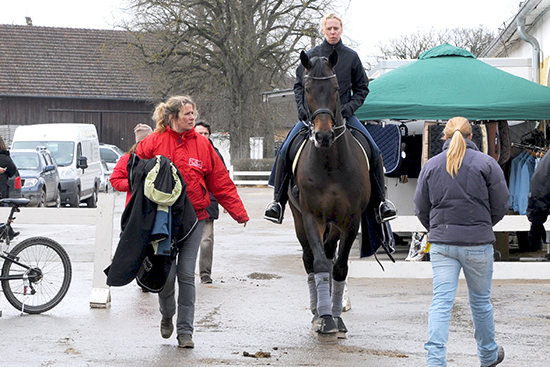
Chantal and Ferero in Europe
When did you ride your first Grand Prix with Ferero?
“That was a national class in 2007. I was still based in Germany – I rode my two national shows to get my qualification to ride internationally, and I did that in 2008 on the Sunshine Tour. The two national starts were very successful, and I guess we shocked Rudolf – he thought it was going to take a little longer to gel. He sent me off to my very first show with Ferero in Germany, at Grand Prix, by myself – something only Zeilinger could do… I’m not very proficient at reading German, I can certainly understand it, and order my meals, and for my first event, he had entered me in a Grand Prix which required you to come back and ride a Kür the next day.”
“I ended up having to forfeit the €600 I won for 4th or 5th, because I couldn’t ride in the Kür leg. I scored 65% and everyone was so excited for us, they said, oh my god the Kür, and I said, oh my god, I’ve got no music! I rang Rudolf, and he said, no problem I’ll give you one of my old ones, I think it will fit, here’s the DVD, here’s the music. So I was in a panic that night, sat there trying to learn the Kür, and at one in the morning I was told, enough is enough, you need to go to bed because otherwise you won’t be fit to do anything even if you do work out the music. I got up in the morning and starting listening to it again, I was supposed to be back that night at 7 pm, by two in the afternoon, I decided to abort the whole project, it was just going to be a mess. Better to quit while I was ahead. That was the beginning of Rudolf and I going head to head, he hadn’t prepared me, he should have known better – you expect a bit more of people when you have given them more than they have given you back. That’s where it started to unravel…”
Competing in Europe with Ferero
“I had to start thinking about different approaches. Ferero was quite tight in the back from the method of training, and I wanted to explore other methods. I decided it was time to move on and seek further education if I wanted to become a better Grand Prix rider and a trainer. I’d been looking around, and I guess I tend to pick a rider, which is not always the best method because a good rider is not necessarily a great teacher. I knew many Grand Prix riders and their stables and I was a little wary of going into another commercial sales barn. I didn’t want that because they don’t usually produce the best Grand Prix horses. I did some more research and I went to many interviews and looked at many stables, and watched their coaching methods with international students, then I came across the Bartels family and they seemed to be what I was looking for.”
“I spent two and a half years with them.”
Did you have to adjust your system coming from Zeilinger?
“I did. I went there in January 2008 with the aim of going to Hong Kong later in the year. They said it’s a hard push but probably you can do it. You’ve got the horse, it is just a matter of getting around and doing as many tests as you can – get your MES [minimum elegibility scores]. I did that, and the Hong Kong saga is all behind me now. I didn’t go, but it is always an eye opener when you are the new kid on the block, unfortunately you’ve got to do your time even though I considered my time had been done, but it wasn’t done enough in Australia – because in Australia I had only ridden at Prix St Georges level and that’s where everyone thought I was. They didn’t realise that I had done so many years in Europe, training all levels of horses, including Grand Prix horses.”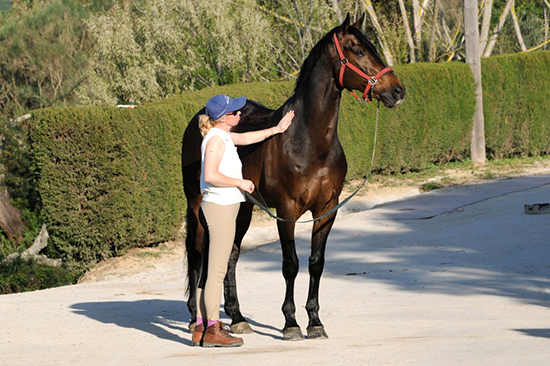
“So from January to October 2008, we didn’t change the training program very much – mainly Imke Bartels taught me, but Tineke Bartels was there when she was away, they are a good combination with the experience they both offer. It’s a good place to go if you are serious about training, and they don’t sell, it’s very hard to get them to find you a horse – they will find one if you are really looking but they don’t have horses there that are constantly being tried by new customers, or horses that clients take away at the weekend and then it is your job to repair them for the next show.”
“After I gave up on Hong Kong, then I did get serious about using their approach, and even though I had been watching it in action for eight months, it probably took another six months, maybe longer, to adapt it to my training. There was a period of six months when I did not ride and Imke competed the horse for me, I was so disappointed that I needed a break. Imke was kind enough to take him on the international circuit and that kept the horse’s competition record up. I would certainly trust her fully with any horse of mine…”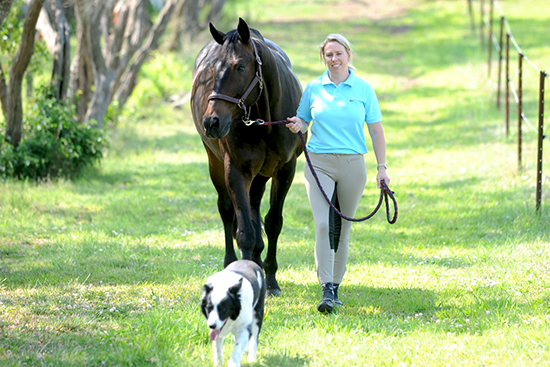
But wait, there were more disappointments to come…
“There are always disappointments with horses, and everything that goes with them…”
The next big event you didn’t get selected for was Lexington…
“It does go on, but I think I was a little more braced for that. It’s also understanding the selection criteria because I had read the criteria as meaning as long as I got my MES, that I would be in contention. That’s what I understood, and that’s what I’d been lead to believe, once you go into it a little further, it is not the MES that counts. You have to already be on a squad, either an A or B squad, and then if you read further, you find they will only take you if you are on the elite squad.”
What made you decide to pack up and come home?
“Foremost are financial and family reasons, that brings anyone home quickly to Australia. It is much cheaper living here, I don’t pay for agistment, and I don’t have accommodation costs, double car rental. I would have loved to stay in Europe and if I was 20 years old and had what I had now, there would be no way you’d get me on a plane back to Australia. We are self-funded, we have no sponsorship yet, so I had to come home and re-start money generating projects.”
But that was a pretty successful move; you come home to Australia and start winning the big Grand Prix…
“Yes. I wouldn’t have expected much less. I’d say I have an advantage over most of the Australian riders because of the amount of tuition I’ve had over the years from extremely good instructors. Then you get down to basic talent, the inner horse person, and I have an understanding of what the horse is telling me, and that is more important than just going out riding. And I’ve got the horse.”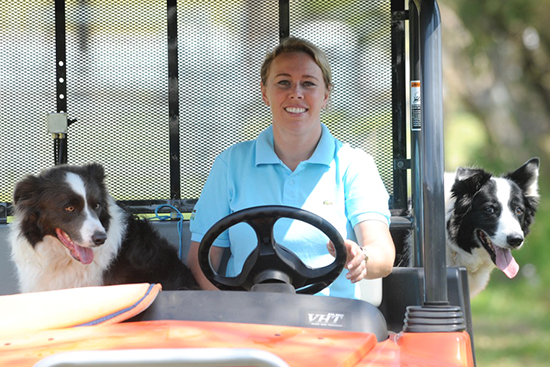
What sort of a person is Ferero?
“Quirky, really quirky. He’s an extremely hot horse by nature, but quite a lazy horse on the other hand. He lights up quite well with music, especially indoor music. He’s much easier to ride
in an outdoor environment than he is indoors. I train indoors and outdoors at home with him, but he is a typical Ferro, he goes from calm to off the Richter scale at a volcanic level, as a rider you have to not be affected by those things – especially as he showed at Werribee, he can toss in a buck just before he goes in the ring. It doesn’t faze me those little things.”
You have won at Werribee, that’s three CDI-W wins in a year – what happens next?
“We go home, I’ve got quite a big clinic program to keep me going. We will give him a little rest after the big trip down and we will be back in Sydney for the Nationals, Equitana, then hopefully claim our trip to the World Cup final in Europe next year.”
This article first appeared in the November 2011 issue of THM.


